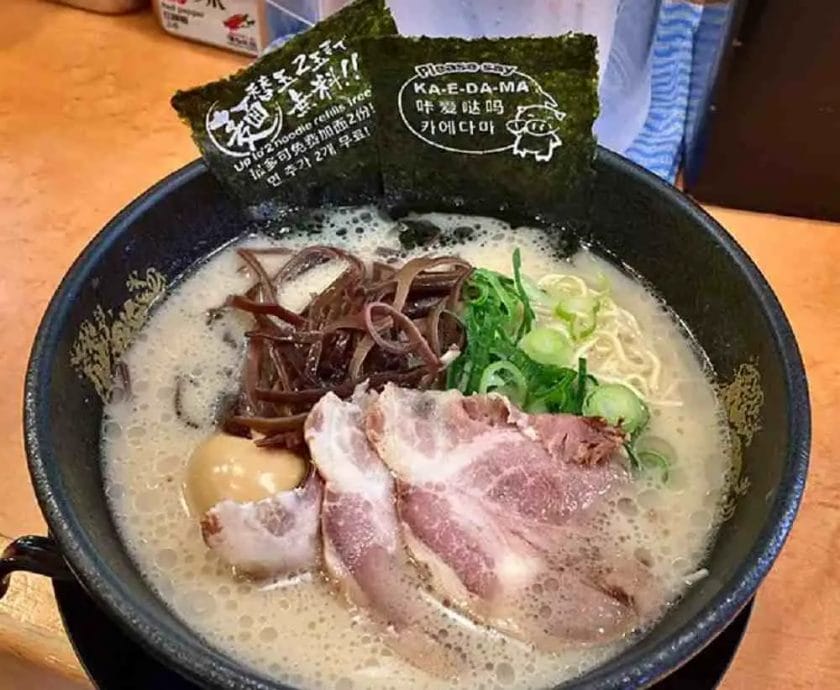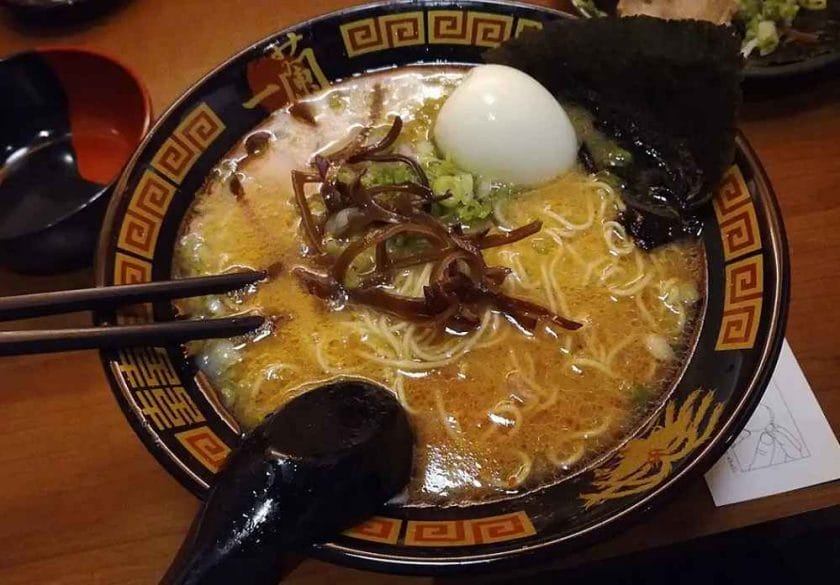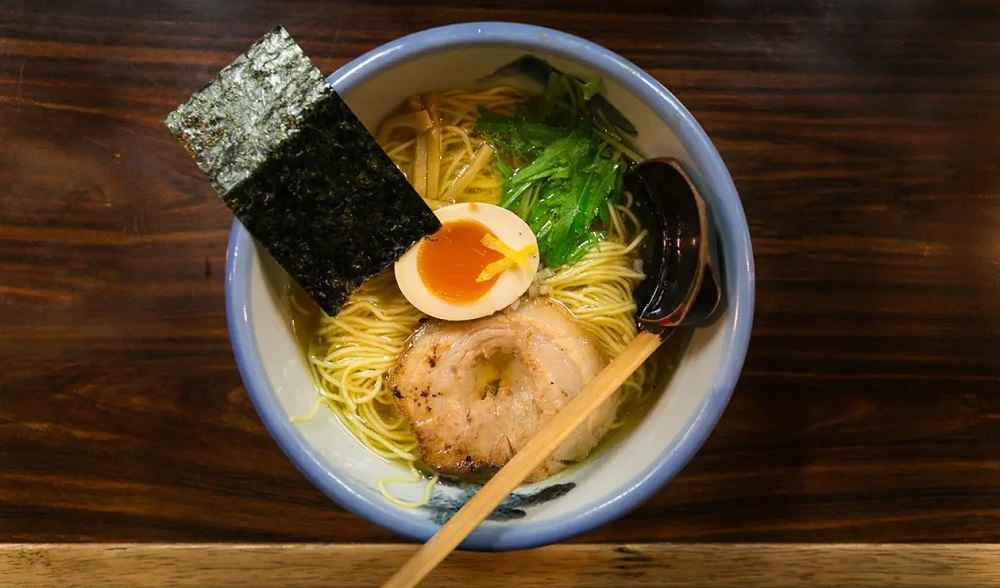Ramen is a popular Japanese dish that consists of Chinese-style wheat noodles served in a meat or fish-based broth, often flavored with soy sauce or miso, and topped with ingredients such as sliced pork, dried seaweed, and green onions.
While Ramen is a delicious and satisfying meal, it can also be high in calories, making it important for people to understand its calorie content when eating out or cooking at home.
In this article, we will explore the calorie content of restaurant Ramen and provide tips for making healthier choices.
Understanding the Calorie Content of Restaurant Ramen
When it comes to Ramen, the calorie content can vary greatly depending on the ingredients used and the size of the serving.
On average, a bowl of restaurant Ramen can contain anywhere from 400 to 800 calories, with some dishes even reaching 1,000 calories or more.
Calorie Comparison of Different Ramen Styles
There are several different styles of Ramen, each with its own unique flavor profile and calorie content. Some of the most popular styles of Ramen include:
- Shoyu Ramen: A soy sauce-based broth that is typically lighter in color and flavor than other styles of Ramen. On average, a bowl of Shoyu Ramen contains around 500 to 600 calories.
- Miso Ramen: A miso-based broth that is often thicker and stronger in flavor than other styles of Ramen. On average, a bowl of Miso Ramen contains around 550 to 650 calories.
- Tonkotsu Ramen: A rich, creamy pork broth that is known for its milky white color and hearty flavor. On average, a bowl of Tonkotsu Ramen contains around 600 to 700 calories.
Factors that Influence the Calorie Content of Ramen
There are several key factors that influence the calorie content of Ramen, including:
Noodles:
The type of noodle used in Ramen can greatly impact the calorie content of the dish.
Ramen noodles are traditionally made from wheat flour, but some restaurants may use other types of noodles, such as egg noodles or rice noodles, which can have different calorie counts.
Broth:
The type of broth used in Ramen can also greatly impact the calorie content of the dish. A richer, creamier broth, such as Tonkotsu, will typically have a higher calorie count than a lighter, clearer broth, such as Shoyu.
Toppings:
The type and amount of toppings used in Ramen can greatly impact the calorie content of the dish. Some common toppings, such as sliced pork and boiled eggs, are high in calories, while others, such as dried seaweed and green onions, are lower in calories.
Sauce and Seasonings:
The type and amount of sauce and seasonings used in Ramen can also greatly impact the calorie content of the dish.
Some sauces, such as soy sauce, are high in calories, while others, such as miso, are lower in calories. The use of additional seasonings, such as chili oil or sesame oil, can also increase the calorie count of the dish.

How to Make Healthier Ramen at Home
While eating out at a restaurant can make it difficult to control the calorie content of your Ramen, making it at home gives you the opportunity to choose healthier ingredients and make healthier choices.
Here are some tips for making healthier Ramen at home:
Choose Healthier Noodles:
When making Ramen at home, you can choose to use whole grain noodles, which are higher in fiber and nutrients than traditional wheat flour noodles.
You can also opt for noodles made from alternative flours, such as rice or buckwheat, which are lower in calories.
Making a Low-Calorie Broth:
To keep the calorie count of your Ramen low, you can opt for broths that are lighter in flavor and color, such as vegetable or chicken broth. You can also make your own broth at home using healthier ingredients, such as lean meats and low-sodium seasonings.
Adding Healthier Toppings:
Toppings are a great way to add flavor and nutrition to your Ramen. Opt for toppings that are lower in calories, such as fresh vegetables, tofu, or mushrooms, and limit the amount of higher-calorie toppings, such as sliced pork or boiled eggs.
Making Homemade Sauces and Seasonings:
Homemade sauces and seasonings can be lower in calories and higher in flavor than store-bought options. Try making your own sauces and seasonings using healthier ingredients, such as low-sodium soy sauce, fresh ginger, and garlic.

Conclusion
Ramen can be a delicious and satisfying meal, but it can also be high in calories. Understanding the calorie content of restaurant Ramen and making healthier choices when cooking at home can help you enjoy the dish without sacrificing your health.
By choosing healthier noodles, making a low-calorie broth, adding healthier toppings, and making homemade sauces and seasonings, you can create a tasty and nutritious Ramen dish that you can feel good about eating.
Frequently Asked Questions
Is Ramen always unhealthy?
Ramen doesn’t have to be unhealthy. The calorie content of Ramen depends on the ingredients and preparation methods used.
Choosing healthier ingredients and making healthier choices when cooking at home can help you create a nutritious and satisfying Ramen dish.
Can I still enjoy Ramen if I’m trying to eat healthier?
Yes! Making healthier choices when cooking Ramen at home can help you enjoy the dish without sacrificing your health.
Choose healthier noodles, opt for a low-calorie broth, add healthier toppings, and make your own sauces and seasonings to create a nutritious and satisfying Ramen dish.
What is the difference between traditional wheat flour noodles and whole grain noodles in Ramen?
Traditional wheat flour noodles are typically made from refined wheat flour and are lower in fiber and nutrients than whole grain noodles.
Whole grain noodles, on the other hand, are made from whole grains and are higher in fiber and nutrients. Opting for whole grain noodles can help you create a healthier Ramen dish.
Can I use vegetable broth instead of meat broth in Ramen?
Yes! Vegetable broth is a lighter and healthier alternative to meat broth and can be used to make a delicious and nutritious Ramen dish.
How much sodium should I look for in a low-sodium broth for Ramen?
It is recommended to look for broths with less than 140 milligrams of sodium per serving.
However, it is always a good idea to check the label to see how much sodium is in the broth and to make an informed decision based on your dietary needs and preferences.

